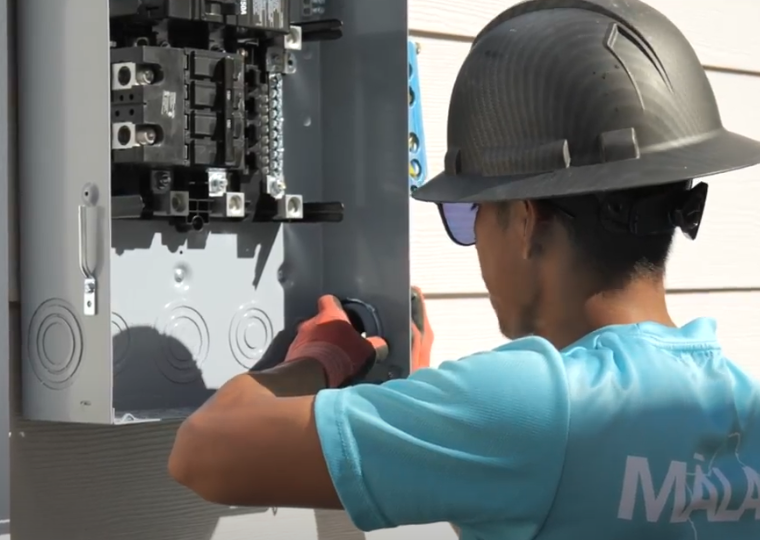Solar Tax Credits Explained
We’ve all heard that there are big tax benefits to installing solar, but how do these credits really work? Are tax credits still available? Does everyone qualify? How much are the credits worth? These are questions that come up again and again. Let’s dive in and see how these tax credits really work…and yes, all the tax credits are still available!

What is a tax credit?
A tax credit is “an amount of an amount of money that taxpayers can subtract from taxes owed to their government.” A credit reduces the amount of tax you owe. For example, let’s say that throughout the year, your employer withholds $9,000 in taxes (meaning you paid $9,000 in taxes). If you were eligible for a $5,000 tax credit, you would receive a REFUND of $5,000, making the total tax paid for that year $4,000. Make sense? Tax credits are a good thing, and so are tax rebates, but they’re not the same thing. Rebates are checks you get in the mail. (More on that in the warning section)
How Much are the Credits worth?
The federal government offers a tax credit worth 30% of the total cost of the system, and in Hawaii, we also get a state tax credit worth 35%. Wow, 65% of the cost of solar is covered?! While that would be awesome, it almost never comes out to an even 65% because the state credit caps out at different limits depending on the size of your system (meaning the state limits how much credit you can claim depending on how many panels you install). However, the federal credit has no limits!
Example
You’ve just installed a new solar system for $40,000. Under this example, your federal tax credit (30%) would be $12,000, and your state credit (35% with limits) would be around $8,000. This means your total tax credit would be around $20,000! That’s half the cost of the system, making your total cost after credits $20,000!
This is one of the reasons installing solar PV has been so popular in Hawaii.
Who Qualifies for Tax Credits?
In order to qualify for these tax credits, you must meet the following conditions:
- Own your home . . . sorry renters 🙁
- Own your solar system*
- Have enough tax liability**
- Install your system by December 31, 2019
*Many companies offer lease and power purchase agreements; however, homeowners do not qualify for the tax credits if they lease their system. Instead, the leasing company claims the tax credit, not you! Homeowners that buy or finance their systems are entitled to the full tax credit.
**Let’s go through some examples to illustrate what we mean when we say tax liability.
Example 1
The Thompson ‘Ohana purchases and installs a $40,000 PV system this year (2018) and are excited to get the $20,000 tax credit. Throughout 2018, they paid $25,000 in taxes through their employer. ($15,000 in federal taxes and $10,000 in state taxes.) Because the amount they paid in taxes was more than or equal to the total tax credit, they qualify for the full tax credit and will receive a REFUND of $20,000!
Example 2
The Lee ‘Ohana purchases and installs the same $40,000 system this year, but they only paid $10,000 in taxes in 2018. ($7,000 federal and $3,000 state) They are also eligible for the full tax credit, but because the amount they paid in taxes was less than the total credit, they will only receive a refund of $10,000. So what happens to their remaining credit? It rolls over into the next year. If they pay at least $10,000 that year, they will still be able to claim the remaining credit!
This means that most homeowners will end up getting their full tax credit, but it may take a few years.
The good news is, remaining credits roll forward until they are all used up. Some homeowners, retired, those on a fixed income, and many military, will find that they may not get their tax credit as soon as they had hoped, or in the case of military members that are not paying state taxes, they may not qualify at all for the tax credit. For these situations, it is possible to qualify for a state tax rebate. We’ll go over that in another article.
A Warning about Tax Credits
Some solar companies have been known to focus a homeowners’ attention too much on the after-tax credit amount instead of the full cost of the system. They gloss over the $40,000 price tag and move the attention to the $20,000. While the tax credit is real and chances are you will be able to claim the full credit, how quickly you’re able to claim the credit will depend on your individual tax situation. You will still need to pay or finance the full cost of the system, and any information to the contrary is both deceiving and manipulative.
While these tax credits are very helpful in covering the cost of solar, they are not rebates where the government will send you a check in the mail. Be cautious of any company that doesn’t explain this clearly to you.
In Summary
Tax credits are a huge part of getting solar, and they can really help you to get low cost energy. Depending on your tax situation, you may be able to claim your full credit in the first year! In Hawaii you’re eligible for two different tax credits that you will be able to claim as long as you install your system by December 31, 2019. (There will still be a federal tax credit after that, but it will be reduced).
At Mālama Solar, our job is to help educate and assist you in your solar decision making. If you have questions about tax credits or want to see if your home qualifies for solar, feel free to reach out to us and we’d be happy to help!
We are not tax professionals, and we recommend you consult with a certified tax advisor to discuss your individual tax situation.



